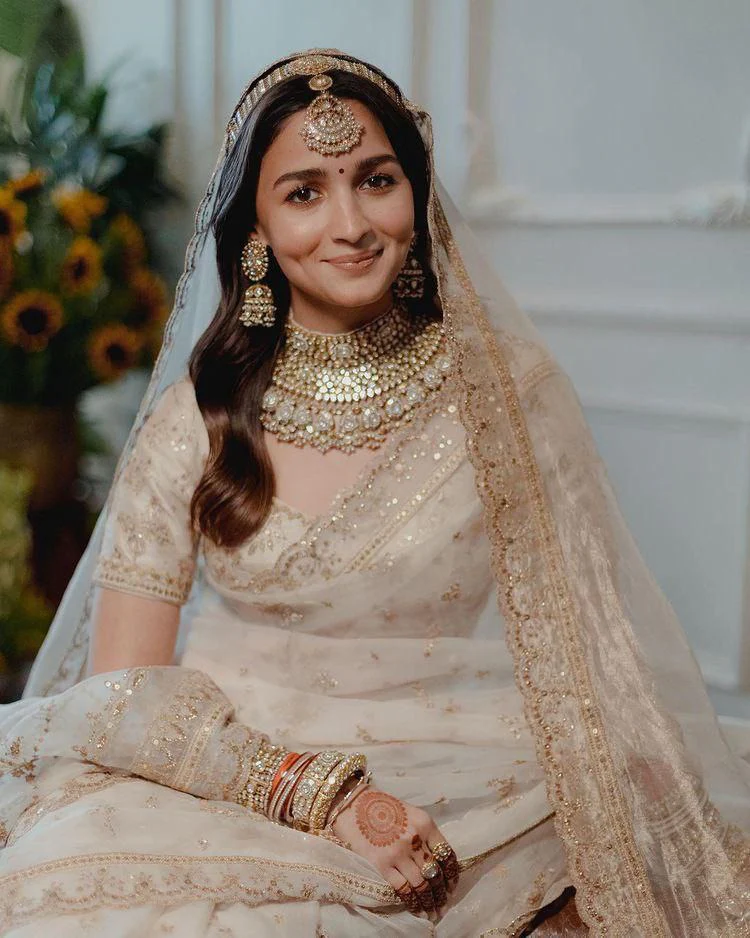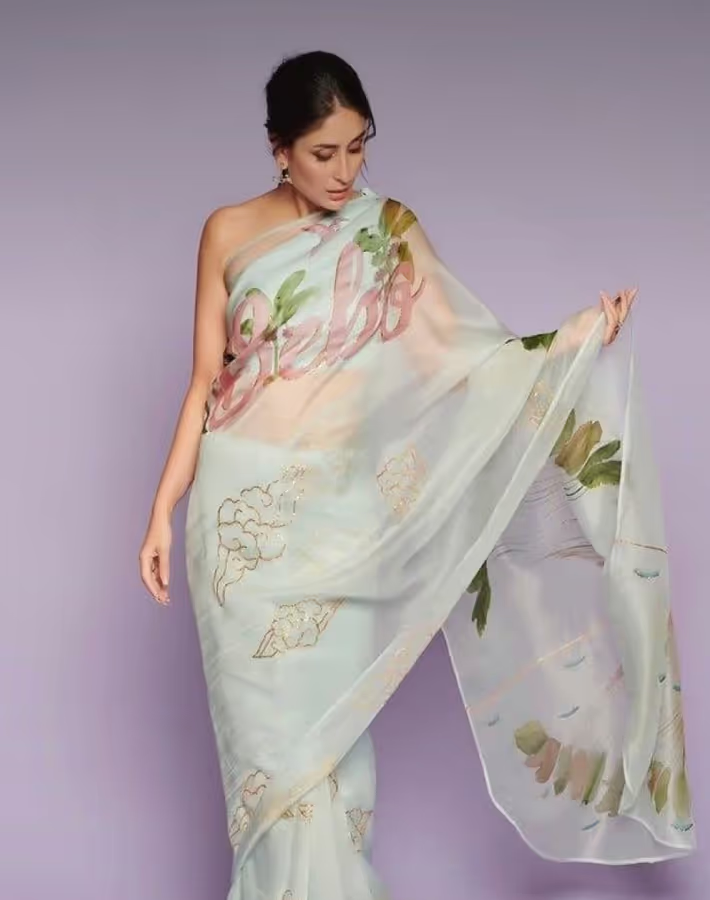Organza silk saree for wedding
- Trusha Kenil
- Mar 24
- 5 min read
Introduction of Organza silk saree for wedding

As the name implies, an organza silk saree is made from the special fabric known as organza. Organza silk saree for wedding are popular among Indian ladies because they may provide a clear look. This plain weave saree is very delicate since it is designed to have a very low hardness, which also makes it transparent. The fabric is perfect for summer wear because it is meant to be highly breathable.
Classical fabrics like cotton, silk, and even Banarasi sarees are rapidly being replaced by organza sarees. Such sarees are a popular option for lady's summer attire because of its light fabric, vivid colors, and contemporary designs. One of the most well crafted textiles ever is organza, formerly known as Kora. The word "Organza" gained its name in this way. Organza is a lightweight, translucent fabric with a simple weave.
History of Organza silk sarees

Through the Silk Road, organza made its way from China to Europe, where it has since maintained its status as a popular fabric for dresses and also became popular for sarees. French and Italian-made silk organza is still a luxury choice for bridal gowns and dresses. Although organza is still mostly produced and exported from China, many other countries are now producing this beautiful fabric.
It is claimed that putting on a diamond ring is just as floating as carrying an organza saree. This shows why it is worldwide used in wedding dresses, official attire, and occasion wear. Organza saree begins from decades of experience fashion essential, organza history keeps going to hold a particular place in the souls and wardrobes of women from different cultural backgrounds. This wrap is covered with a variety of procedures, such as flower designs, smashing trends, and tightly embroidered threads that are active providing it an lovely style in soft and bright shades. Organza sarees with artwork have previously only been carried by the royal family due to the material proven for centuries made of silk. Since then, it has remained powerful substantially, and makers have helped it to be generated using artificial materials like polyester, nylon, or rayon. The newest organza saree source with embroidery achieved a lot of growth throughout this time, thanks to the film industry stars carrying it.
How Is Organza Made?
Traditionally organza sarees are manufactured from silk, organza is a sheer, thin fabric with a simple weave. Silk organza is woven in numerous mills along the Yangtze River and in Zhejiang province, China.

Here are more details about how’s an Organza sarees made:
Thread Treatment:
The yarn is treated with acid, which makes it more rigid and gives organza its distinctive crunch.
Because synthetic fibers are already rather rigid, this acid treatment might not be required.
Fiber mixture:
Organza can result from silk. Alternatively synthetic fibers, polyester or nylon can be used.
If silk is chosen, the process begins with silkworm cocoons. They are then "reeled" to make long fiber strands.
The next step involves silk or synthetic fibers. This is to twist two single fibers. They are twisted in directions that oppose one another. The goal is to create a yarn.
Hand-made or Machine-made
Spinning
Types of Organza saree
Organza Silk

It is among the finest organza saree materials, providing a wonderful blend of traditional and modern Indian patterns. For any Indian woman who is passionate about sarees, the organza silk saree with the thick zari pallu and border is therefore a dream of theirs.
Printed Organza
Printed Organza saree has two types:

Digital Printed Organza Sarees:
In order to create digitally printed sarees, designs are also printed onto the fabric using digital printing technology. Recent advances in digital printing technology have revolutionized the fashion business and created an amazing array of machine-printed organza sarees. These gorgeous pieces, which have been meticulously crafted to highlight your grace and elegance, might help you recognize how tradition and modernity can coexist. Stress your grace and elegance. Because they are manufactured, sarees made digitally are less expensive than those printed by hand. It is made of a blend of modal and silk fibers and creates luscious, flowing drapes. Its transparent, translucent structure and sparkling, light feel make it unique.

Hand Printed Organza Sarees
These sarees, which are made using the traditional hand printing method, display the deft hands of artisans who painstakingly create gorgeous patterns on the fragile organza cloth. The subtle color shifts that give hand-printed organza sarees depth and personality are among its most attractive features. The background color and texture of a painting are crucial if you want to highlight its best features. The fabric and color palette are crucial factors for hand-painted sarees. Every hand-printed organza saree embodies the classic charm of traditional handicrafts and conveys a tale of creative skill and rich cultural heritage. An ancient Indian textile art that is still practiced today is painting organza sarees or hand-block printing them. There is more to wearing these sarees than just fashion.
Organza Sarees with Embroidery

An embroidered organza saree is the most appropriate choice if you are looking for a saree that can be used for your party wear. These sarees, which have elaborate pallu motifs that are currently popular among today's generation. The robust fabric elegantly extends the frame in terms of visual expansion. The entire ensemble can be accentuated with even a small amount of embroidery at the saree's edges. They represent grace and majesty and are the epitome of elegance. Organza sarees will satisfy your needs whether you are wearing them to a special day out, a holiday celebration, or an event.
How you can take care of your organza saree and how to store it
If the saree needs to be cleaned, wash it by hand and avoid using the washer and dryer. To assist keep it in good condition, use cold water instead of hot.
Make sure that all of the soap has been washed off the saree when you are done. Even a small amount will damage the saree and make the cloth appear dull with each washing.
The saree should not be washed dry. Since it would cause curling and ruin to the material, this is undoubtedly one of the ugliest things you can do to your Organza saree. That is undoubtedly not what we would want! Simply rub and tap the water out of your cherished saree.
Your Organza saree should always air dry! Just because it is more convenient, do not put anything in the dryer. Simply hang it outside to air dry.
Please store the saree in a closet out of direct sunlight after wrapping it in a muslin towel. Your Organza will appreciate it if you do this and it will last longer!
If you can steam iron it instead of using a flat iron, consider doing so because flat irons can damage fabric.
FAQs about Organza sarees
1) What Is Organza Saree?
The name organza silk saree refers to the special fabric called organza. A favorite saree fabric among Indian women who want to look classy and lovely is organza silk. For an ordinary twirl to a celebration style, the organza silk saree is perfect for many occasions.
2) How to wear an organza saree?
The most basic technique put on an organza saree is to wrap it over your neck like a scarf and drape it. For extra flair, you can also use jewelry or a knot to tie each end in the front or at the rear of your neck.
An alternative way to wear the organza saree is to wrap it over one shoulder, tucking one end that hangs down from the waistband into the opposite side. The benefit of trying this is that it draws focus away from any trouble spots on your body by creating an appealing loop-like structure in front of it.















Comments